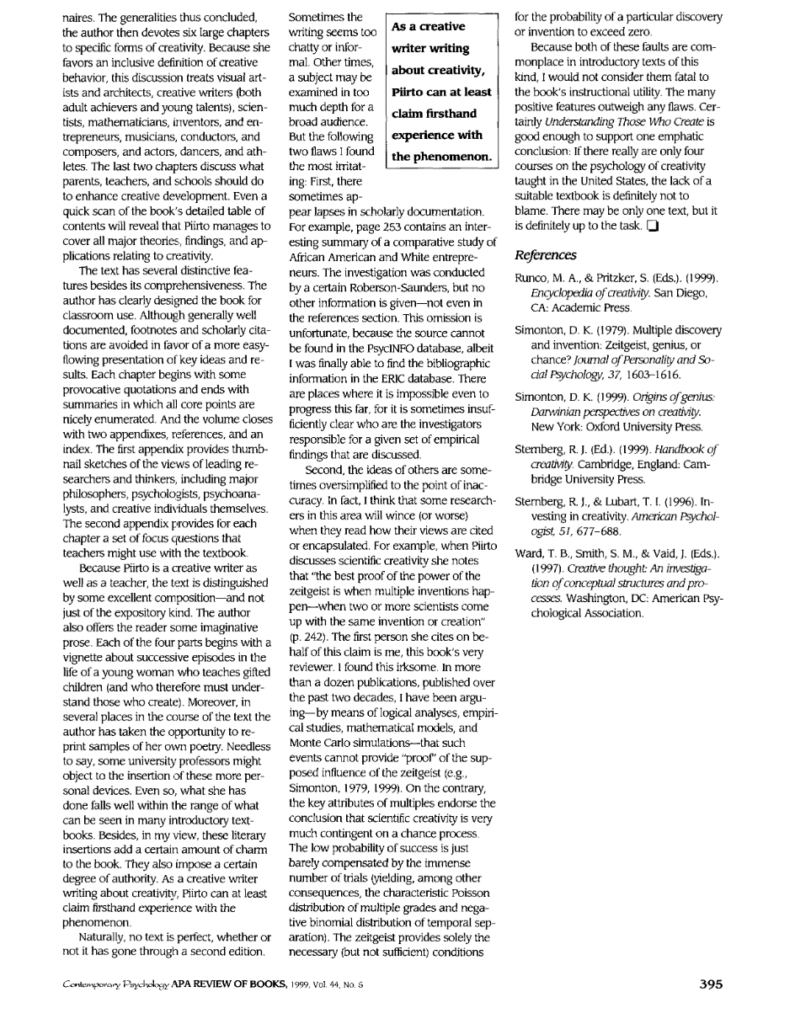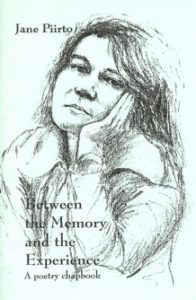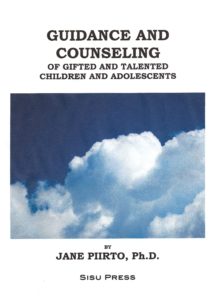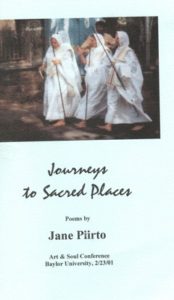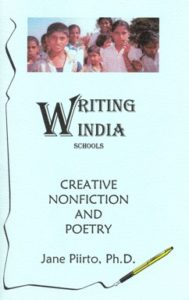Here are covers of most of my books, both literary and scholarly.
Below are also published reviews of my books.
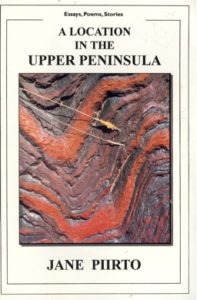
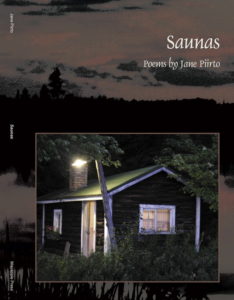

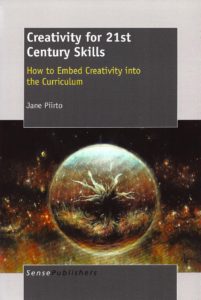
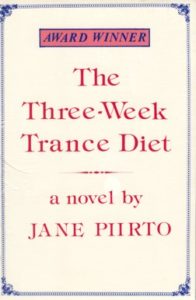


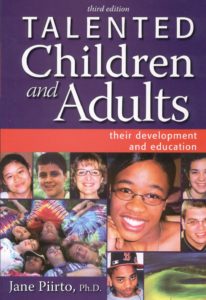
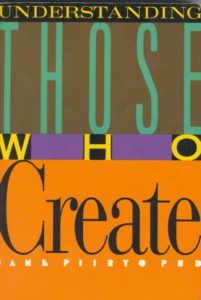
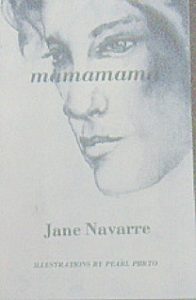

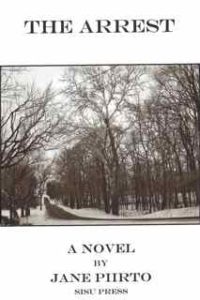
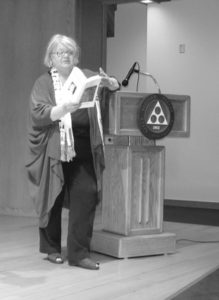
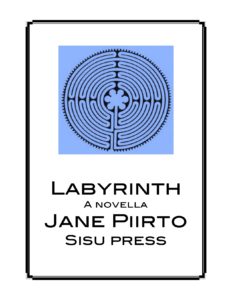
Selected Reviews of Various Books
Review of Saunas

Devoted to Home: A Review of Jane Piirto’s Saunas
By Beth L. Virtanen, PhD
Finnala
2008
Again, Jane Piirto gives us a touching and earthy set of poems in her latest work, Saunas. It is a carefully crafted volume that takes us from Finland to the Upper Peninsula of Michigan, to Argentina, Denmark, South Dakota, and other places, each described with bright and vivid detail.
Of “Blueberries” she writes: . . . Further off the path by rock with lichens we wander and don’t speak much, but we hear chickadees and the wind, soft and august. Blue smudged by fingers plops into the pail, then falls soundless and it fills. (p.8)
And her reader is transported to the Upper Peninsula with the pungent taste of blueberries on one’s tongue and the stains upon one’s fingers, and imaginary pail in hand.
As she reflects on walking the dog near her home in Ishpeming, she shares: “You just go out/to run the dog,/get waylaid by raspberries./Every trip ends up/with treasure” (p. 9). Her reader, again, reflects on the pleasure of simply walking along the footpaths to find, by good fortune, an abundance of fruit, a fruit that sustains both body and soul.
The book itself is divided into four sections: (I) Saunas, (II) Women Like Horses, (III) To a Sleeping Child, and (IV) Mushrooms, each devoted to a particular theme. In the first, each poem is introduced by a runo from the Kalavala. The blueberry poem above is introduced thus: “I, a berry, fell on other lands. Runo 23, Kalavala.” (p.8). “Wild Raspberries, the second quoted passage above, is introduced by Runo 50: “I took a berry I liked.” The link, of course, is clear, and each runo providing a deeper context for Piirto’s verse.
The second section is a careful study of women and their loyalties, sometimes in a feminist mode and often reflecting on the trials of being at one phase or another. Of a fifteen-year-old girl’s attraction to James Dean, she writes, “Jimmy—Jimmy—with his sidelong grin, those cute/glasses, shucks, blinks, a little wave in his hair,/shy, shambling, no football jock/a poet, not a hood” (46). And of a childhood friend she writes: “Susan,/it is good to be as we are,/friends since we were three,/in love with movement on skis/on snow in woods. . . . (p. 50).
Piirto’s reader grows as she does in her recollections, from the crush of a fifteen-year-old girl on a tragic rock star into the surer friendship of womanhood, one that shares and builds on that shared experience. The section culminates with a poem dedicated to an Argentinean Saint, a woman who died, crossing a desert with her infant son in her arms. In her arms, he survived, suckling at her breast until, three days later, he was found by muleskinners. There is a shrine to her, there in Argentina, where “Thousands of candles flicker/in the dollhouses along the dusty way/of these mumbling creeping pilgrims [who worship at the shrine]” (p. 58).
In the third section, Piirto examines motherhood and womanhood. In “Succumbing,” she writes of a mother who has abused her child: “Being a woman/is not just sexual politics./It’s you, my son,/who cringed, eyes backed/at my terrible anger,/as I sat on you and beat your bottom/with my fist” (p. 61). In this harsh poem, Piirto’s poetic creation of a mother who behaves outside the bounds of what we wish to know, still, teaches something. In the last stanza, Piirto writes in the words of the mother: “Now, afterwards [after the boy’s growing up]/I understand more than you’ll/put up with/about shame” (p. 61). The poem hurts, but it teaches. Also in this section, Piirto examines a three-year-old’s concept of time and the loss of a parent. It is a powerful casting of life’s tougher moments interspersed with some of the simply joyful ones.
The closing section, “Mushrooms,” examines maturity, the knowledge of which wild mushroom to eat and which to pass by, the knowledge that the mushroom in the can won’t look like the mushroom in the bush. It reflects on self-doubt brought about by self- awareness, those bits of knowledge that seep in once we pass beyond the blush of youth. Early in “Tango Argentina,” Piirto writes about being charmed by the country. A fortune teller assures the speaker in the poem that she can be a tango singer and that her true love will come on the tenth day of her stay. On the tenth night, she stays out late at the cantina with her friends, but no love comes. At 5:00 a.m., “This cute waiter tells me/he wants to come to the U. S./He wants to marry me!/. . . I am drunk on disappointment/and possibility./He is not my love./ Does this mean/I cannot be/a tango singer/either?” (p. 89).
In all, the book is tremendous. It takes the reader on a sensate journey about the globe, and it brings us home to ourselves.
It is well worth the read. It is available from Mayapple Press.
Review of Saunas

By James Tipton
Bloomsbury Review, October 2008
SAUNAS. Jane Piirto. Mayapple Press, $15.95 paper
ISBN: 978-0932412-645. 2008. 96 pages
I live in the mountains of central Mexico. Here in less than 30 days we have had more than 20 inches of rain. More often than not the rain begins and ends in the middle of the night. I lay awake listening to the sound of the hard rain and the occasional thud of a ripe mango falling to the earth.
No one who does not live in the tropics has ever experienced the exotic essence of a ripe mango, a mango maduro. I breakfasted this very morning on a bowl of that deep orange and indescribably delectable fare. Indeed, those mangoes picked green and shipped north no more resemble a ripe mango than a poem “picked green” and published too early resembles a “ripe” poem.
Jane Piirto’s poems are like those ripe mangos. They have been allowed to mature on the tree.
Jane’s tree, though, is her own life in the Midwest, particularly the Upper Peninsula of Michigan and northern Ohio. The poems in Saunas are about what was and the longing for what is now lost, as well as about what is and the deep connections to the earth and to each other that yet may be possible.
In “Taking Sauna: Saturdays, 1950s,” Piirto participates in the tradition of her Finnish forefathers and foremothers:
Four girls and Aunt on benches
wait to sweat up, ladling cool
water on the hot round rocks. [20}
The Finnish families “take sauna” [21] as other families might take communion together. After the “four slippery bare-naked girls with/their naked plump aunt…”[21] have finished, the uncles, with their quart bottles of beer “go down for another….”
Through the half-open doorway
sit seven bald, naked men,
lined up on the orange bench
against the smooth whitewashed wall,
their heads bent forward,
arms resting on their spread legs. [22]
But now it is no longer 1950 and “except for Uncle Ernie” [23] the uncles are all dead.
The house, sold, is in shambles.
we former children,
older now than they were then,
now grandparents, never take
saunas on Saturday night. [24]
Piirto’s delight and pride in her Finnish heritage pervades the poems, particularly in Section I, “Saunas,” where each poem is introduced by a Runo, out of the Kalevala, “sometimes called the epic poem of Finland….”[94] One of the poems, “Grandma you used to,” is even followed by a translation into Finnish.
Section II, “Women like Horses,” recounts temptations, fascinations, longings, political triumphs, obsessions. Who hasn’t experienced unrequited love? For Piirto, “I Will Never Love Anyone the Way I Loved James Dean”:
It was the purest love I’ve known for love’s sake,
in just 15-year need, the very greed of love
that’s unrequited.
I murmured prayers to him before my prayer—
dear James Dean James Dean don’t be dead you can’t be dead don’t be don’t James do James oh James oh.
I took up with Jesus soon after. [46]
Piirto’s own children and grandchildren are the focus of Section III. To a Sleeping Child. Again, Piirto’s delightful sense of what can be discovered when one actually wants to see, comes forth in poems like “Forts,” which begins:
There’s one beneath the basement steps,
carpeted with a crib mattress,
closed off with a worn out bedspread.
There’s one in the attic,
secret in the junk and jumble,
small hollow under caving boxes.
There’s one in the garage,
where this week’s neighborhood club
exchanges officers—
“No Grils Alowed.”[64]
She finds sound advice in the words of a 3-year-old who explains that
tomorrow is when she wakes up
in the morning and when we tell her
we’ll go shopping tomorrow she
remembers yesterday and informs us
that it is tomorrow that today is
yesterday that therefore the time is
always now to do what we plan to do
tomorrow[66]
In the final Section IV. Mushrooms, Piirto’s deep love for the world in which she has suffered but also in which she has found herself surfaces in every poem. This world includes “All Those Little Brown Birds” so difficult to tell apart: “Dappled, the differences/like trying to tell twins apart/(one has a mole on his chin, one doesn’t).”[73], as well as the scarlet tanager that thought “the window reflecting trees and air/was trees and air.”[71]
In the final poem, “A Blessing,” Piirto drives north, returning to the Upper Peninsula of Michigan, to her Finnish roots:
I come each season
to my old bed
in my old room
near the ancient red bluff. [92}
In the morning
small languid snow falls.
Slow winter dawn lifts
on old apple trees
on a white hill.
The old house sighs
You are home.
This, at least,
has not changed. [93]
Jane Piirto’s Saunas is another high quality production by Mayapple Press, a press that has been around now for thirty years. It was a lovely surprise to discover Saunas because in recent years I have so often read poetry by poets who are much better known than Piirto but whose poems were “picked too soon.”
Poetry needs to live for a while in a mature intelligence before it is ready to be picked…and published. Jane Piirto’s poems have that mature intelligence.
Stand under her tree some night. Hold out your hands. Catch one the moment it drops.
—James Tipton
James Tipton’s collection of poetry, Letters from a Stranger (with a Foreword by Isabel Allende), is a Colorado Book Award winner.

Reviews of The Three-Week Trance Diet
This novel won the Carpenter Press First Novel Award over 75 other submissions. Here is the postcard the editor sent me when I won.
From Small Press:
Piirto’s first novel is a very funny satire of contemporary U.S. trendy/pop/jock culture. The story begins with the romance between Marvella, a beautiful fortyish woman, and her “Dear Boy,” a handsome and virile jock young enough to be her son. Their marriage plans are crushed when the Dear Boy learns she uses “vulgar” language on occasion. When he immediately falls for bwana, Marvella’s daughter, a series of hilariously fantasy consequences follows.
Piirto’s control of language and allusion is masterful.
She fires rounds of such clichéd phrases as “craven knaves” and four-flushers” as though she could never run out of ammo. Occasionally, she comments on a scene. A passage in which two people gaze into the “swift waters” of a “cold mountain stream” concludes with omniscient narrator’s observation that our nostalgia for such a hackneyed setting derives from beer and cigarette ads, not from experience. Her plot parodies the escapist fare on TV programs, popular comic/adventure films, and best-seller lists. Even her sexy scenes parody popular romantic fiction.
What makes Piirto’s novel more than just a witty put-down of the self-centered and empty-headed aspects of our society is the serious strain that emerges in her narrator’s ironic intrusions into the story.
She also uses her most interesting character, Dakota, an “old and faithful retainer” a.k.a. a mystical Native American, to help us see beyond the cartoon characters of her characters. Dakota helps us see the human potential under the satirical veneer. A fine first novel.
Peter Dollard
⌘
From Columbus Dispatch
Sexual rivalry is a major theme of The Three-Week Trance Diet. Mother vies with daughter for the love of a muscular college student, female friends argue over one’s relationship with the other’s ex-husband, and an athlete and a motorcycle hood do public combat for the affections of an attractive teenager.
Published by Carpenter Press as winner of its 10th Anniversary First Novel Competition. The Three-Week Trance Diet is also a satire of contemporary culture.
Author Jane Piirto pokes fun at a number of the gewgaws of modern male/female relationships, such as waterbeds, oil massages, spiked heels, outdoor weddings, health clubs and, of course, fad diets. Piirto’s book is fun. Her wit and wise crackery make for enjoyable reading and her biting satire gets her point across very well.
Kay Ward Davis
⌘
From MidAmerican Review
Jane Piirto serves up a lip-smacking, gum-popping narrative stance in The Three-Week Trance Diet. She spices it up with a plot that has more twists than a soap opera, and garnishes it with a cast of characters ranging from a dyslexic brat armed with a little more than the usual sixteen-year-old, to a line of high kickers from a Broadway show cheering on a biker named O.D. in a duel. The result?
A sparkling feast for readers.
Will Marvella find True Love? Will Letitia find the next best thing? Will Bwana discover she has ribs? Will the virgin heroine fall into the arms of her true love with a tiny gasp of “My Hero”? Is chivalry dead? Will the cavalry get there on time? Will Big Time Publishing Agent make them all millionaires by buying the rights to Bwana’s diet? Will Coach seduce or be seduced? Will Marvella sign the release forms? Will Bwana succumb to chocolate-covered raisins? Will Letitia reveal Ex’s big secret? Jane Piirto tells all.
I have to admit that I had my doubts. By the end of the first page we are acquainted with Marvella and Letitia (or Snow White and Rose Red [or the blonde and the brunette—take your pick’). As different as Ivory soap and Obsession this unlikely duo cruises the singles scene looking for Relationships. Generally not a fan of pop/cult lit and of characters defined by their choice of deodorants, I found myself sneering through the soap. But the sneer turned up at the corners. A smirk through the cigarettes and toothpastes, it was a broad smile by the time Ava Gardner and Dyan Cannon were paraded in.
I was laughing out loud a paragraph later and found myself only in the middle of the fourth page.
From there, the plot thickened, the satire bit harder and harder, and I was off on a seven course tour-de-force that held me for the next 200-plus pages. It is Piirto’s eye for our follies that holds all the imagination in place. “Books without words make it big,” says Big Time Publishing Agent. Under the laughter, there is an uncooked Brussels sprout.
But all is not satire. Satirizing 20th-century culture is not the most difficult thing in the world, nor will it, by itself, sustain a book of over 200 pages. And a plot that brings in the Army, Cheerleaders, a Marlboro-smoking country troubadour, a Freelance Hit Man, motorcycle gangs, an epic duel between good and evil, a fruitloop prospector, ad infinitum—while brilliant in its management—won’t either. (Though, much to her credit, Piirto spins a tight yarn.) But this is all sugar to help the medicine go down. And as adeptly as Piirto characterizes and uses her characters as mouthpieces,
there is an underlying truth being explored, a truth that fleshes out her people, that makes black white, white black, and everything grey. Her characters hurt.
“Sell the movie rights to a diet?” says Marvella. That would be marvelous.
Rick Henry
Review of Understanding Creativity

by Kimberly McGlonn-Nelson
Roeper Review. Volume: 27. Issue: 2. Publication Year: 2005. Page Number: 123. COPYRIGHT 2005
Piirto, J. (2004). Understanding Creativity. Scottsdale, AZ: Great Potential Press. (521 pp., $34.96 hard cover, ISBN: 0910707588)
How can professionals in academia, classroom teachers and parents of creative children understand the “creative”? How can we even begin to discuss what has always been so difficult to describe?
Perhaps the key to understanding our students and children lies not in finding perfect answers, but instead in the ways in which we raise the questions that may set us towards the path of deeper knowledge.
In her newest volume, Understanding Creativity, Jane Piirto attempts to do just that.
Surely few would argue that composing a text that somehow summarizes findings within a field of study and contributes new knowledge to it is no uncomplicated task. Nevertheless, in Understanding Creativity, the author also accomplishes this goal.
Piirto begins by first paying homage to scholars of creativity. She acknowledges, for example, the contributions and ideas of E. Paul Torrance and Howard Gardner. By including anecdotes, song lyrics, and poetry, she manages to bring her reader into the text, isolating no one and inviting all. Her language, even from the very first page of the preface, is such that it can be reasonably digested by even those unfamiliar with creativity studies. She plainly states that her goal in writing this book was to create a text that is accessible to a wide variety of people–one that she is successful in meeting.
This book is in four distinctive parts. In Part I entitled “Definitions and Processes of Creativity,” Piirto defines the term “creativity.” She does so in two chapters by addressing the roots of creativity, recognizing its long-standing ties with the field of psychology. She explains the creative process as it has been seen, and then introduces her idea of the “Seven I’s” which address inspiration, imagery, imagination, intuition, insight, incubation and improvisation. Lastly, she uses these chapters to briefly discuss the historical relationship between creativity and mental illness.
Part II provides suggestions for enhancing creativity. Throughout these two chapters, the author ultimately defends a basic premise of the book–that we can enhance creativity because the core attitudes necessary for increasing creativity can be taught. Strong attention is given in this portion to the parents of creative children and the teachers they work with. Her suggestions are supported by real-life stories and specific guidelines.
Part III is a discussion of “Personality and Intellectual Characteristics of Creative People in Various Domains.” Chapter 5, the first of seven chapters in this segment of the book, presents
“The Piirto Pyramid of Talent Development Model.” Her original model, though presented without strong supporting evidence from the present body of literature, situates Piirto within the field as a force to be reckoned with.
Although the model does not explicitly address race and class, it is largely comprehensive and wholly well-defined.
The remaining chapters of Part III are dedicated to examining what Piirto suggests in her model are the major domains of talent: the visual arts, creative writing, creative scientists/mathematicians/inventors/entrepreneurs, musicians/conductors/composers, and physical performers. She includes in these six chapters countless biographical sketches, which work well to help ground her conclusions about the various factors at work within an individual talented in each domain. Her choices of sketches, however, do not include many women and are limited to persons of European descent. Surely much could be gained from the inclusion of individuals from other cultural perspectives, both for those readers who represent this vantage point and those who do not. Additionally, her focus on the manifestations of creativity and the nature of individuals who are creative is perhaps too constrictive. Often the attributes associated with one domain are true of some of the others as well.
“Creativity Assessment and Training,” the final part of Piirto’s text, addresses issues of assessment within the study of creativity. Piirto is successful in this chapter at highlighting the historical struggles not only with defining creativity, but also with measuring it. She discusses the concerns of validity and reliability, simultaneously providing a useful checklist for practitioners.
Piirto leaves her reader on a positive note, closing the book by offering options for creativity training.
Her techniques speak to a wide variety of situations. This works extremely well and definitely serves to reinforce her initial goal, which is to create a work that can be accessed by all who are in need of deeper understanding.
She concludes the text nicely by returning to the “Seven I’s” and the value of them. As with every chapter, the 13th and final one concludes with a summary of what was presented and provides several focus questions for further discussion.
With Understanding Creativity, Jane Piirto undoubtedly makes a significant contribution to the field of creativity studies. Her efforts to conceptualize the field and then to add to it are to be commended. The book, which will surely be appreciated by scholars both in and out of the field, synthesizes previous knowledge while simultaneously beckoning the reader to ask new questions. Piirto’s newest work argues that individuals possess specific talents, which contrasts with Gardner’s idea of intelligences. Her discussion of the development of the individual provides encouragement and serves well as a point of reference for those in search of a clearer understanding of creativity.
The reviewer, Kimberly McGlonn-Nelson, is a teacher of eighth grade gifted English, and a doctoral student in the department of curriculum and instruction at Louisiana State University.
Review of “My Teeming Brain”: Understanding Creative Writers

Researching a Special Kind: The Lives and Passion of Creative Writers.
David D. Preiss
Department of Psychology, Yale University,
New Haven, CT, US.
Appears In: PsycCRITIQUES. Vol 49 (5), Oct 2004, 528-530.Publisher Info: American Psychological Association, US. 2004.DOI: 10.1037/004785
Review Of: Jane Piirto. My Teeming Brain: Understanding Creative Writers. Cresskill, NY: Hampton Press, 2002. 395 pp. $27.50
Abstract: Originally published in Contemporary Psychology: APA Review of Books, 2004, Vol 49(5), 528-530. Reviews My Teeming Brain: Understanding Creative Writers (see record 2003-02247-000).
The reviewer notes that this book adds interesting new pages to various threads of of research regarding creative writers.
The book not only includes a complete review of the related evidence on the personality of creative writers but also an innovative study of the contextual factors that are conducive to high achievement in the domain of writing.
Regarding the structuring of the book, it is divided in two parts. The first part (titled “Person, Process, Product, and Press”) provides a review of the research on creativity and writing and discusses the attributes of writers, using an individual-differences perspective, which includes not only personality but also practical intelligence attributes. The second part (titled “Themes in the Lives of Contemporary Writers”) presents the results of a qualitative study regarding the main contextual factors affecting the lives of creative writers.
The reviewer concludes that My Teeming Brain is an interesting book that delivers a complete taxonomy of issues that are relevant to the lives of creative writers. It infuses its categories with lively portraits of real life experiences. It comes and goes between multiple levels of analysis depicting a complete panorama of what a writing life really is. By combining the most traditional inquiry on the personality of creative writers with less common research on contextual and practical factors, Piirto depicts a complete portrait of the careers and lives of writers that is not only informative but also a rich description of the everyday world of writing. With its emphasis on the quotidian dimension of a writing life, the book helps the reader to come close to what is exceptional in a writing life as well as what it has in common with the life of everybody else. Without any doubt, the book will appeal to psychologists working on creativity, talent development, and related fields.
(PsycINFO Database Record © 2007 APA, all rights reserved) 9 references present. 9 references displayed.
.
A Review of “My Teeming Brain”: Understanding Creative Writers

by Diane Montgomery
Roeper Review, 2004.
Piirto, J. (2002) “My Teeming Brain”: Understanding Creative Writers. Cresskill, NJ: Hampton Press (395 pp., $27.50 pb, $79.50 hb, ISBN-1-57273-276-8).
This book is a detailed report about a massive research project studying creative writers. The project was completed singularly by the author and researcher, Jane Piirto. The book situates the study in the creativity research literature and more broadly in its nexus of the field of psychology. Piirto frames her analysis of the work by and about 160 writers within the context of the Piirto Pyramid model.
Not only will those who desire greater understanding of the lives of creative writers be interested in this book, but researchers seeking examples of excellent qualitative analytical studies will have this book on their shelves.
This book is organized in two major parts with supporting appendices. The first part of the book provides the context for the study, including literature for creativity, psychology and writers. The goals of the study included integrating information regarding creativity research (Chapter 1), the creative person (Chapter 2-3) creative processes (Chapter 4), and what the writer must know to produce the “product” (Chapter 5). Dr. Piirto states that the book “combines original research with a synthesis of research in order to come up with a look at creativity as it relates to the creative writer” (p. 27). This synthesis is well demonstrated in the second part of the book, which presents the analysis and the existing literature to support the themes that emerged. Particularly impressive is the evidence of the hundreds of references, endnotes, and documents reviewed.
The theoretical framework for this work was the Piirto Pyramid, briefly introduced in the second chapter and referenced from over a decade of research reported elsewhere (e.g., Piirto, 1998, 2004). The second part of the book presents the findings of the research according to the five Piirto “Suns,” a portion of the Pyramid that represents the environmental requirements for talent development, in this case, successful writers.
Here, the reader experiences the 16 themes generated from the analysis of at least two works by the 80 male and 80 female U.S. contemporary (20th century) writers and a member check with 20% of the women writers by survey. Additionally, the method of research included an impressive expert check with Frank Barron, who validated the results as a researcher and a writer.
Following the tenets of rigor in qualitative research (Reissman, 1993), Dr. Piirto provides a background of her own life as her dual role of a researcher and a creative writer. The reader will recognize this as a strength of the study as the author/researcher makes no apologies, but boldly walks the blurry line of the overlap of her two areas of giftedness. As a creative writer she adds interest, spark, intrigue and an elegant reading style to the thick description of creative writers. Yet, as a researcher, she monitors her interpretation of the themes, not stretching descriptions beyond the findings. The results are consistently placed in the context of existing research, achieving the blend of new findings yielding a fresh analysis with the current state of what is known about writers.
The results are an enjoyable read; one that gifted writers might use to recognize their similarities and differences in a world where the Sun of Chance contributes to public recognition. Imagine the comfort provided to adolescents as they begin to seek fame beyond their school context when they read that the book is dedicated to those who work diligently, yet are “under-recognized and under-appreciated.”
Among the many praises one might detail for this book, there is one that should be highlighted here. Upon first blush, a cruise through the table of contents or the two appendices (one for each gender group analyzed) that demonstrate the themes might lure the reader to believe that the study was purely structural; research that found what it sought by definition. However, when reading deeply into the lives of the writers, one develops a greater understanding of individual differences. Group similarities emerge in the context of the theory as suggested by researchers who demand that “account needs to be taken of the functions of particular narratives, the cultural conventions and the contexts within which they occur” (Cortazzi, 2001, p. 385). Dr. Piirto expertly reveals her ability to remain true to the intent of the research and, at the same time, provide an interesting read on what the research reveals about this domain of talent.
Advance comments herald this as “a book like no other” (back cover). You will agree after reading it.
REFERENCES:
Cortazzi, M. (2001). Narrative analysis in ethnography. In P. Atkinson, A. Coffey, S. Delamont, J. Lofland, & L. Lofland (Eds.), Handbook of Ethnography (pp. 384-394). Thousand Oaks, CA: Sage.
Reissman, C. K. (1993). Narrative analysis. Newbury Park, CA: Sage.
Piirto, J. (1998). Talented children and adults: Their development and education (2nd ed.). New York: Pearson Education.
Piirto, J. (2004). Understanding creativity. Scottsdale, AZ: Great Potential Press.
Diane Montgomery is a professor and Programs Area Coordinator for Educational Psychology at Oklahoma State University and the current president of The Association for the Gifted.
Review of Understanding Those Who Create, 2nd Edition

Review in Mensa Research Journal, 2001
Reviewed by Francis Cartier, Ph.D.
Understanding Those Who Create, 2nd Edition.
This is the update of the book first published by Ohio Psychology Press in 1992. It has added references as recent as 1998 to its 29-page bibliography.
Piirto wisely begins with an intensive inquiry into the many definitions of creativity. My own extensive study of the definitions once led me to the frustrated conclusion that, for research purposes at least, we should apply Ockham’s Razor and expunge the term entirely. After all, we nearly always apply the term ex post facto. E.G., she quotes Csikszentmihalyi’s position that “Creativity is any act, idea, or product that changes an existing domain, or that transforms an existing domain into a new one.” You see the problem, don’t you? Instead of using the present tense, Csikszentmihalyi might have said more clearly, “. . . that has observably changed an existing domain . . .”
Piirto comes close to my conclusion that the word creativity is virtually meaningless but, also as finally I did, succumbs to the sometimes-useful illusion that creative thinking is somehow different from real thinking. (My position used to be that real thinking is so rare that, when we observe it, we feel we need to celebrate the occasion with a special adjective: creative.) She also seems to share my concern that the term is often applied indiscriminately to an aptitude as well as to an achievement, which seriously blurs the concept, and that the terms creative and gifted have been disadvantageously entangled.
A major concern of the creativity theorists is whether one can be creative without a created product.
Logic suggests that without a created product, we cannot conclude that a person is creative; in other words, in order to be judged creative, one must have created something. But in fact such a nonproduct assessment of creativity is essentially what is done in talent development education when creativity is defined as creative potential and is considered an inherent type of giftedness.
Piirto explores this question, the contribution, if any, of “IQ” to creative accomplishments and nearly all the other past and current issues regarding creativity. She does it very well, indeed. If you have Piirto’s book and those of Teresa M. Amabile, whose work Piirto admires, you have about as clear a picture of the state of theory, definitions, and research into creativity as you could get.
So how does Piirto define it? (The italics are hers):
“Creativity is in the personality, the process, and the product within a domain in interaction with genetic influences and optimal environmental influences of home, school, community and culture, gender, and chance. Creativity is a basic human instinct to make that which is new.”
While creativity is the natural propensity of human being-ness, creativity can be either enhanced or stifled. The creative personality can be either developed or thwarted.
Creativity takes certain habits of mind. Creativity is not separate from intelligence or artistry, but part of the whole. What is unnatural is for it to be repressed, suppressed, and stymied through the process of growing up and being educated.
Amen, say I, though a lot of those words need to be unwrapped and explained. She does that fairly well later in the book. My own study of creativity, done for the Air Force, was limited to its applications to practical implications for managers and engineers, so I was particularly pleased that Piirto includes aesthetic creativity and I hoped to learn something about that aspect as well. I did. However, as engrossing as it was to read the biographies of so many great, creative artists, I was disappointed to find that Piirto, like many writers on creativity, hasn’t fully considered the possibility that creative problem solving may require a totally different definition and theory of creativity than in the arts. Piirto often agrees with Amabile and others that the mechanisms of creativity may be specific to a domain (science, writing, drawing). Still, she falls into the ancient trap of proposing a single definition covering domains. She’s in good company in that trap. In her Appendix A, she gives thumbnail descriptions, “as if I were writing a movie blurb for TV Guide,” of 73 philosophers, psychologists, and other pundits, all but three or four of whom reify the essentially predicative concept of creativity as a single concept.
After Part II, devoted to a fairly thorough description and critique of creativity tests, questionnaires, checklists, and other assessments, Part III delves deeper into the research on personality and intellectual characteristics of visual artists and architects, writers, musicians and composers, actors, dancers, and even athletes. Scientists, mathematicians, inventors, and entrepreneurs are not neglected in this review of creativity by domain. Most of this section is anecdotal, but this is enlightening and makes interesting reading.
Piirto writes beautifully. Her book is intended as a textbook for a university course on the psychology of creativity, presumably for teacher training, but reads as well as a novel.
Part IV, which begins about four fifths of the way through the book, is titled, “How to Enhance Creativity.” Her recommendations are all positive, useful approaches. However, I would have liked to see much more on avoiding or removing the barriers to imaginative thinking. There are many ways in which creative thinking is discouraged and even stifled in both the home and the classroom. Understanding them may be even more important to a parent or teacher than merely encouraging or “enhancing” creativity.
Despite such minor caveats, this is an excellent book. I’m not the only one who says so. As I near completion of this review, I found a review by Dean Keith Simonton, Contemporary Psychology, APA Review of Books, 1999 (Vol. 44, No. 5, pp. 394-5). He found a couple of minor flaws that I didn’t, but still gives it very positive marks. Says, Simonton, “I know of no recent textbook [on creativity] that is as comprehensive as this one.”
If you are the parent of a creative child, or if you are a teacher with some creative children in your classroom, you (and those kids) will profit from your reading it.
Review of Understanding Those Who Create, 1st edition

Review in Roeper Review, 15 (2), of Understanding Those Who Create
by Joan Franklin Smutny
Trying to define and discuss creativity — what inspires it and how it can be tapped and developed — is a little like the tale of the three blind men and the elephant: When each man is asked to describe the pachyderm, there are as many different perceptions of the creature as there are men. Likewise, literature on creativity can be “idiosyncratic, theoretical, and highly dependent on the particular author’s predispositions.”
In her book, Understanding Those Who Create, Jane Piirto sets out to open the eyes of the reader, with a sweeping and comprehensive overview of the myriad approaches to creativity, creativity training, and studies of the creative mind that have adorned the educational landscape for the better part of this century.
Piirto translates some of the “good stuff” found in academic journals and books, so that it becomes meaningful for the lay reader as well as the professional.
She synthesizes pertinent research on creativity and creative people, making it relevant and digestible so that it can be put to practical use. She purposes to make sense of creativity research and theory, particularly with regard to how creativity and giftedness are related and inter-related — and she succeeds admirably.
In the first section, which is divided into two chapters, the author defines creativity, explains how creativity and giftedness are interrelated, and describes what takes place during the creative process. Chapter 1, “Creativity and Giftedness,” illustrates that everyone has a proprietary interest in this thing called creativity, a relatively new concept as it relates to education. Most researches have different definitions for the word, the only common ground being that it does indeed exist, manifesting itself through various forms of human expression. Studying giftedness (an even greener term, still rejected by the spell-check dictionary on my word processor) along with creativity then, requires some fancy footwork.
Chapter 2 reviews some of the noteworthy studies that have endeavored to identify and define creativity in relation to giftedness in children. The most notable of these is the significant, pioneering work of E. Paul Torrance, the developer of the Torrance Test of Creative Thinking and the father of creativity. Piirto discusses several theories regarding the creative process. Traditional and contemporary approaches to fostering creative expression, creativity as the process of a life, and the creative process as cognitive science are explored in this section.
How Can Creativity Be Measured? In Part 2, the author perceptively probes this controversial can of worms, by covering the basic, practical issues of creativity testing, training, and checklists. Two schools of thought exist on testing for creativity — those who think creativity can be assessed systematically and scientifically and those who feel creativity testing is of no intrinsic value. It seems evident that the author’s sympathies lie with the latter; but, in pursuit of objectivity, she provides a substantial overview on how researchers determine the validity and reliability of creativity tests and checklists.
Piirto continues this discussion, by citing various difficulties associated with using creativity test results, and behavioral and creativity checklists. Alternative methods, such as the use of storytelling as a measure for verbal creativity, appear to her to be better suited for gauging a child’s creative abilities. Piirto recommends creativity training (actual courses in creativity) as a valid enrichment activity for teachers and students, but maintains that it is not by itself sufficient as a curriculum for gifted education.
Part 3, Types of Creatively Gifted, presents personality profiles of several types of creative individuals, including visual artists in Chapter 5; creative writers in Chapter 6; children with extraordinary writing talent in Chapter 7; creative scientists, mathematicians, and inventors in Chapter 8; musicians and composers in Chapter 9; and actors and dancers in Chapter 10.
While offering thoughtful perspectives of these various creative types, Piirto’s discussions are laced with the classification of each creative field in terms of the specific idiosyncratic behaviors associated with (e.g., visual artists are loners, iconoclasts, difficult to get along with; dancers are birds in a cage who have severe eating disorders and are always getting hurt). Notwithstanding its value in pinpointing where the creatively gifted stand on the creativity/career meter, Piirto would have served her purposes more directly in focusing on the assets rather than the perceived liabilities of creativity. These chapters worked best when the author added a biographical or firsthand account of a famous artist, dancer, or musician, such as the autobiographic tidbits she included on ballet dancer Suzanne Farrell and Frank Lloyd Wright. We are allowed to glimpse the tremendous genius, strength, vision and understanding behind the work of these great people. Clearly, these are among the qualities of giftedness which we must strive to identify and nurture. As the spectrums of gifted and creativity are filled with this new understanding, the liabilities can be pushed into oblivion.
Piirto engages her readers once again in Chapter 7, with a delightful discussion of children who have extraordinary writing talent. Through her own work with children, Piirto discovered that, contrary to the findings of David Feldman, who in Nature’s Gambit declared that “writing is not a domain where prodigious achievement occurs,” there are many children who write at an adult level of competence. In fact, Piirto observes that “writing prodigy occurs more frequently than is commonly thought” and explains that surprisingly little analysis or study has been performed on what makes children’s writing good; thus, excellent work is often overlooked.
Piirto illustrates her assertion with several stunning examples of linguistic precociousness embodied by young children in the form of poetry and prose.
She found one characteristic common among young gifted writers when she examined the childhoods of several prominent authors; that is, they “read avidly and early.”
These early writers, like gifted children in any other field, need early recognition and nurturing of their talents, Piirto concludes. As a teacher of hundreds of gifted children in creative writing, I couldn’t agree more!
One of the most satisfying parts of the book can be found in Chapter 12, “How Parents and Teachers Can Help Nurture Creativity.” Here, Piirto lists several needs that we, as parents and teachers, can help fulfill for our young gifted children, and suggests how we can serve as models for their creative inspiration.
In addition to recommending that we provide practical tools such as a private, comfortable place for creative work, various working materials, musical instruments, art supplies, private lessons, special classes, etc., she encourages us to take leadership roles by setting the creative tone for our children.
We can value the creative work of others, appreciate creative expression, however unusual or mundane, use individual creative style in our approach to children, and make an effort to do creative work of our own.
Piirto thoughtfully underscores for teachers and parents that talent is only a small part of creative production. Discipline and practice are integral. Time and again, studies of creative people show that the fruits of creativity are truly realized through hard work, Piirto explains. Teachers and parents are also encouraged to avoid emphasizing sex-role stereotypes in the arts, and social acceptance at the expense of creative expression.
Those who will reap the greatest benefits from the rich gathering of information in Understanding Those Who Create are teachers, in gifted or regular classrooms. Parents, too, will gain tremendous insights into the minds and doings of their bright young ones, especially if they resist the temptation to skip the topics that are geared toward educators (such as creativity theory, testing, and training).
This “teacher” stuff can be invaluable to parents, especially those who have ever found themselves advocating appropriate gifted programming — for their own children or for a while school district. The last section, which deals with supporting and nourishing children’s creativity, will have special appeal for parents, although I recommend it for anyone who works with children in any capacity. Older children will find portions of the chapters on artists, writers, dancers, etc., of particular interest. Such reading should be supplemented by other memoirs, biographical and autobiographical material on famous creative people, and a focus on adults who offer vital role models for children and students.
Teachers will find the structure of the book clear and direct. There are cogent summary statements at the back of each chapter and an excellent compendium in the appendix on creativity theorists and theories. The author also includes a running anecdotal narrative throughout the book, about a fictional teacher of the gifted, in an attempt to personalize some of the key topics she covers. This technique is particularly effective when illustrating a specific issue, as in her story about Bobby, the talented but slightly dysfunctional school child who encounters many problems when adults impose creativity testing and questionnaires to measure his creative potential. Perhaps real-life situations gleaned from her own experiences would have given these illustrations greater depth and believability.
Writing a definitive guidebook on a topic such as creativity is an extraordinary challenge. It demands that the author perform a balancing act; maintaining a high level of inspiration, and at the same time keeping her feet firmly grounded in the practical.
Considering the magnitude of the subject tackled, I applaud Piirto for her achievement.
Many gifted educators prefer not to brave this often unexplored topic and are observing along the sidelines, apprehensive about becoming involved until more has been substantiated. We are grateful to Piirto for adding needed impetus to this sphere of thought. As it stands, she has provided a marvelous framework from which to yield a must-have book for educators, parents, and students.
Understanding Those Who Create is a text of universal appeal and applicability, that touches the hearts and minds of those seeking a sound comprehension of this significant subject — one that needs to be far more understood by all of us who work with gifted children.
Joan Franklin Smutney, Director of The Center for Gifted at National-Louis University in Evanston, Illinois; editor of the Illinois Council for Gifted Journal; teacher and author.

